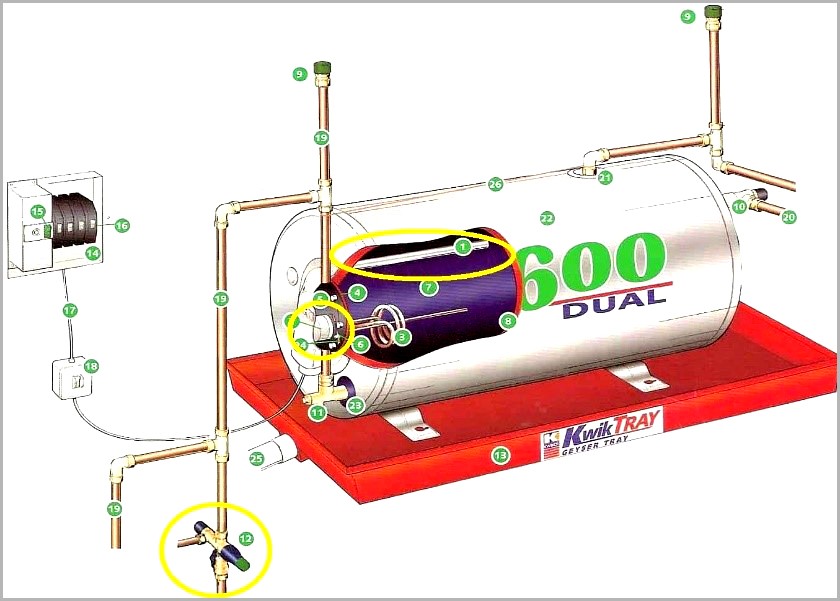Author: Brandon Fyfe, Thompson’s Plumbing 27 February 2020
How to prevent your geyser from bursting?
A geyser’s tank bursts from (1) corrosion of the inner tank due to the physical properties of the incoming water (e.g. high iron & calcium content will corrode the tank faster) and (2) excess pressure due to overheating or incoming water pressure expanding the tank. (1) Anode rods come installed with geysers and are generally made of magnesium or aluminium which are screwed into the inside of the geyser. This anode, or rod, prevents corrosion of the geyser by “self-sacrificing” its metal which attracts the corrosion of the water and its minerals preventing rust. The anode also prolongs the life of the element which corrodes the same way as the tank. (2) A geyser’s thermostat controls the temperature of the water inside the tank, telling the element when to heat up or when to idle. The hotter the water, the more the pressure builds up inside the tank. Pressure reducing valve (PRV): this is a water pressure control valve fitted to the cold-water supply of the geyser. The purpose of the pressure control valve is to reduce the pressure of the incoming mains to a pressure that your tank is rated. The valve operates on a preloaded spring tension rating and this can be defective over time causing excess pressure to enter the tank.

If your geyser does burst, you can ensure the resultant damages are to a minimum by means of a drip tray. This is installed under your geyser with a runaway pipe leading outside. The drip tray catches any water when the tank bursts, taking it outside via the runaway pipe, thus, no water damage is done to the ceiling, walls or paint, etc.
Recommendations: to be carried out by a registered and trusted plumbing company. (1) Inspect the condition of your anode on a yearly basis to ensure it is not depleted and corroding the tank or element. (2) Test the thermostat and pressure reducing valve to ensure that they are functioning appropriately. (3) Make sure that the geyser has an appropriate sized drip tray installed underneath it with the outlet pipe leading to a safe outside area.
Office & 24hr emergency: (021) 976-0327
C32 Icon Business Park, Fourie Str, Brackenfell

Disclaimer: Any redistribution or reproduction of this website (including but not limited to: text, images, videos) is strictly prohibited without express permission from Thompson’s Plumbing. The content on this website are under the protection of the copyright law which ensures its author, Thompson’s Plumbing an exclusive right to intangible property and binding on all. The content on this website is not subject to private appropriation.